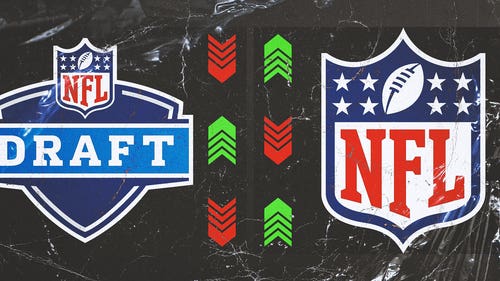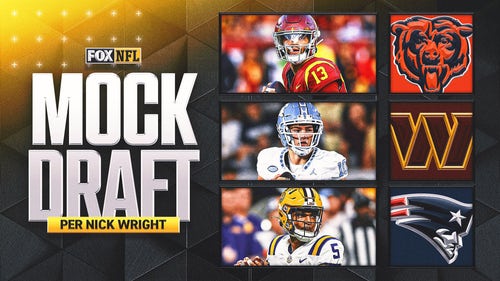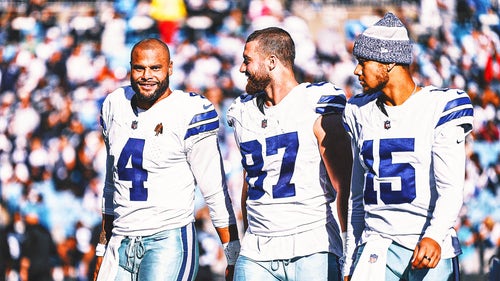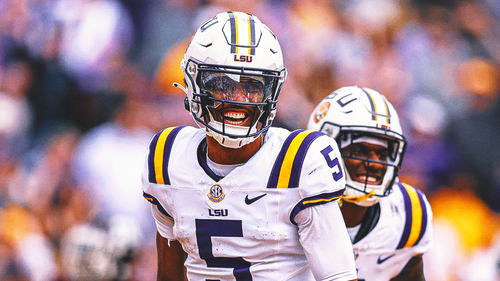
Oakland Raiders: Personnel Moves, Scheme Fixes for Defense
Aug 12, 2016; Glendale, AZ, USA; Oakland Raiders linebacker Bruce Irvin (51) against the Arizona Cardinals during a preseason game at University of Phoenix Stadium. Mandatory Credit: Mark J. Rebilas-USA TODAY Sports
After allowing 1,035 yards in two games, how can the Oakland Raiders rectify their issues on defense? Should Bruce Irvin shift to inside linebacker?
After the Oakland Raiders 35-28 loss to the Atlanta Falcons, outrage over a historically poor defense came into the focus.
Ken Norton’s unit allowed 1,035 yards within the first two weeks. Last week, head coach Jack Del Rio took over play-calling duties during the final defensive series. Based on this week’s press conferences, expect the Raiders’ coaching staff to employ a defensive coordinator-by-committee approach until further notice.
Del Rio deflected questions about who will call the defensive plays during a press conference on Monday. Instead, he talked about correcting eye violations to sew up the holes on defense. On Thursday, Norton discussed a collective effort in relaying the communication between the coaching staff and players.
The non-commitment to directly answer who’s calling plays likely indicates Del Rio’s extensive involvement in the process. As a result, the head coach deserves as much blame or credit for the defensive performances going forward.
Looking at the big picture and ahead to the Tennessee Titans in Week 3, what can the Raiders do to fix their lapses on defense? It’s easy to point out the problem, but how can the coaching staff solve these issues? Is firing Norton a justifiable plan of action two weeks into the season?
Aug 12, 2016; Glendale, AZ, USA; Oakland Raiders defensive coordinator Ken Norton Jr. reacts against the Arizona Cardinals during a preseason game at University of Phoenix Stadium. Mandatory Credit: Mark J. Rebilas-USA TODAY Sports
Firing Ken Norton Jr. Doesn’t Immediately Solve Anything
When a coordinator or coach struggles, questions about firing the coach arise almost instantly. If the coach brings toxic energy to the sideline or fails repeatedly over an extended period of time, it’s a justifiable approach.
Thus far, Norton has coached through 18 games and inherited a less than ideal situation at cornerback. Last year, T.J. Carrie played three positions: cornerback, safety, and punt returner. D.J. Hayden started 13 games on the perimeter and struggled throughout the season. Late free-agent pickup, David Amerson, eventually emerged as the top cornerback on the roster.
More from NFL Spin Zone
Now, with three new starters in the secondary and two games into the season, Norton sits in hot water. The hashtag #FireKenNorton spread through social media like wildfire.
Let’s pump the brakes and allow him to fix the issues before kicking him to the curb. A new defensive coordinator won’t bring the team’s best coverage linebacker, Neiron Ball, back into the lineup. A new voice can’t help the lack of communication among the players on the field. A replacement wouldn’t be able to add quickness to cornerback Sean Smith‘s recovery speed trailing a wideout.
Multiple issues within the Raiders defense need a clever scheme cover up to mask the personnel’s weaknesses. Sure, the organization can bring in another defensive coordinator, but it’s asking the roster personnel to learn something new on the fly while already experiencing basic on-field communication issues.
Sometimes change brings results. Other times, it’s more effective to fix than to throw away. Two games don’t provide enough to show steady progress or decline with new acquisitions on the back and front ends of the defense.
Aug 27, 2016; Oakland, CA, USA; Oakland Raiders safety Karl Joseph (42) stands on the field before the start of the game against the Tennessee Titans at Oakland Alameda Coliseum. Mandatory Credit: Cary Edmondson-USA TODAY Sports
Rotating Personnel
We’ll start with the first solution, which aims to improve, not demolish. The Raiders have already commented on lineup changes. Del Rio expects first-round pick Karl Joseph and sixth-round pick Cory James to play extensive snaps against the Titans on Sunday, per the team’s official website.
Safety Keith McGill allowed the Atlanta Falcons tight ends to run upfield untouched or unaccounted for on multiple occasions. It’s not a surprise to hear about Joseph, who logged nine interceptions as a collegian, debuting on defense in the upcoming week.
As Del Rio said in his own words during Monday’s press conference, poor play opens the door for others. The same goes for inside linebacker Ben Heeney. He started the preseason as the linebacker responsible for aligning the defense. After trailing tight ends on pass routes and allowing huge gains on intermediate throws, he’s going to lose snaps to James.
The Raiders don’t have many options behind Heeney at inside linebacker, but it’s best to leave no stone unturned. As a middle linebacker during his senior season at Colorado State, James struggled in multiple areas, per NFL.com’s Lance Zierlein:
Raw with technique in the middles. Struggled to understand proper leverage to the sideline. Inconsistent in his play following a splash play with a mental mistake. Will make a wrong read and lose his run fit. Slow to drop into space in coverage.
Many people ask, how much worse than Heeney can James play in the middle? When reading Zierlein’s assessment on the rookie’s senior tape, the two show similar weaknesses. Again, sometimes change brings positive results, but it’s not a given especially with players unable to execute within a given scheme.
Sep 18, 2016; Oakland, CA, USA; Oakland Raiders free safety Reggie Nelson (27) stands on the field before the start of the game against the Atlanta Falcons at Oakland-Alameda County Coliseum. Mandatory Credit: Cary Edmondson-USA TODAY Sports
Safety Help with Linebacker Caveat
Over the first two games, it’s clear Sean Smith struggles against quick-twitch wideouts and players able to separate on inside slants. The big-body cornerback doesn’t have the make-up speed to close the gap after trailing on pass routes.
Quarterback Matt Ryan could’ve connected with his star wide receiver, Julio Jones, on more than five throws in Week 2. Nonetheless, he found wide-open tight ends down the seam for higher percentage pass attempts.
The Raiders coaching staff must keep a safety over the top with an eye on Smith’s matchup when he lines up across a burner. Last week, on Jones’ touchdown reception, safety Reggie Nelson took his eyes off Smith’s matchup and veered toward a tight end running close to the sideline, which opened the field for Ryan and Jones on an easy 21-yard touchdown play.
Deciding to utilize consistent safety help on inside routes places tremendous responsibility on linebackers to cover tight ends, at times in one-on-one situations. Without Ball, the Raiders don’t have the personnel to match a coverage linebacker against a top-tier tight end with wide receiver qualities.
Though it’s not recommended for a newly-acquired cornerback cashing in $11 million during the season, Smith can swap with Carrie based on matchups. The third-year cornerback shows more quickness on the perimeter and wide receivers can’t easily use speed to gain separation from him on slants.
Aug 27, 2016; Oakland, CA, USA; Oakland Raiders linebacker Shilique Calhoun (91) during a NFL football game against the Tennessee Titans at Oakland-Alameda Coliseum. The Titans defeated the Raiders 27-14. Mandatory Credit: Kirby Lee-USA TODAY Sports
Increase Pocket Pressure
As a team, the Raiders have logged two sacks. Khalil Mack has come close to taking down the quarterback on multiple occasions. However, it’s not enough when the linebackers and defensive backs struggle in pass coverage. An aggressive pass rush can offset a leaky pass defense.
The Carolina Panthers rescinded cornerback Josh Norman’s franchise tag, and he signed with the Washington Redskins prior to the draft. Nearly a week later, the Panthers selected defensive tackle Vernon Butler, who profiled as a potential interior pass-rusher coming into the league, per Zierlien:
Able to coordinate hands and feet smoothly and has change of direction and closing burst to become a dominant pass rusher from inside.
Can stutter-¬step into pass rush to disrupt offensive lineman’s timing or generate a speed-¬to–power bull rush that can severely dent a pocket.
The Panthers drafted three cornerbacks, but they came after the interior pass-rusher. When in doubt about the defensive backfield, it’s a necessity to strengthen the front line. The best quarterbacks can’t dice up a secondary lying on the ground.
The Raiders should experiment with moving Irvin inside as a linebacker and utilizing third-round pick Shilique Calhoun as an outside linebacker opposite Mack in a 3-4 scheme. The shift eliminates Heeney or Smith as a liability in the middle of the field. Irvin doesn’t have Luke Kuechly skills in pass defense, but he’s no stranger to dropping back into coverage as a linebacker. With the Seattle Seahawks, he often shadowed running backs and tight ends on pass routes:
Per @PFF Bruce Irvin was the 15th ranked OLB in the NFL last season.Solid grade in coverage. Think he is used in coverage more than rush.
— Jason Leskiw (@LeskiwSFBay) March 9, 2016
A dominant pass rush with the best talent on the field should bring results without going through major lineup changes. Keep in mind, Heeney only started three games in the previous season, he’s likely best suitable for a rotational role as opposed to an every-down linebacker.
Furthermore, putting Mack, Irvin, Calhoun and eventually Mario Edwards on the field at the same time should generate immense pocket pressure.
This article originally appeared on
















































































































































